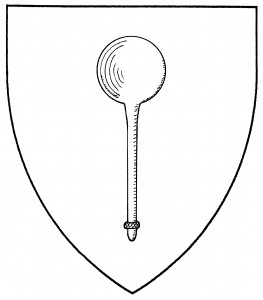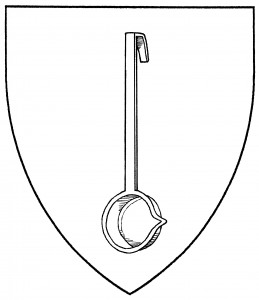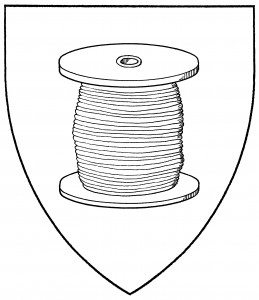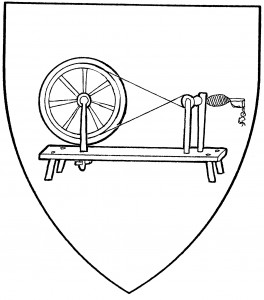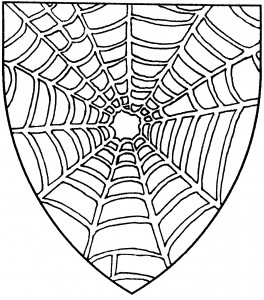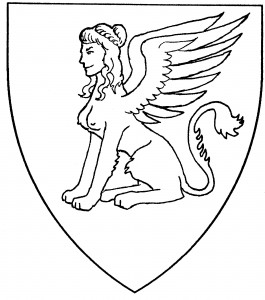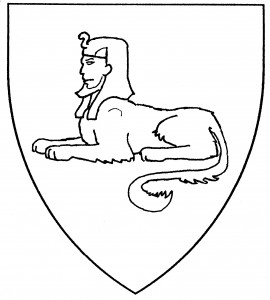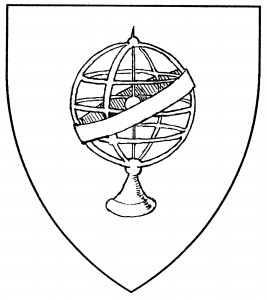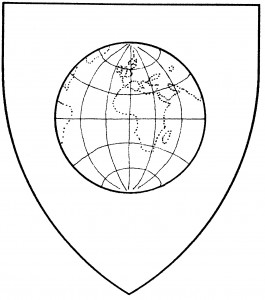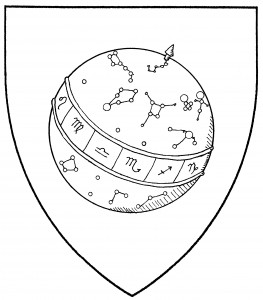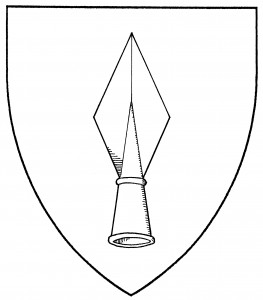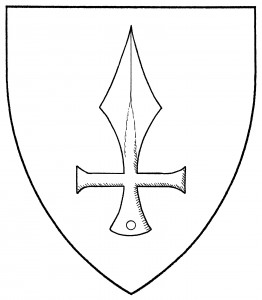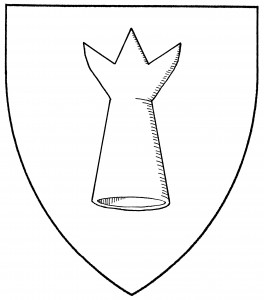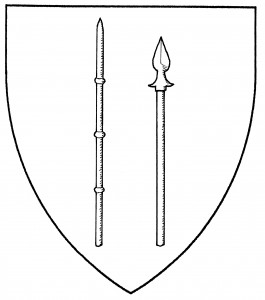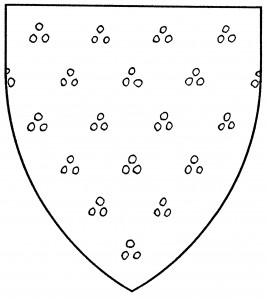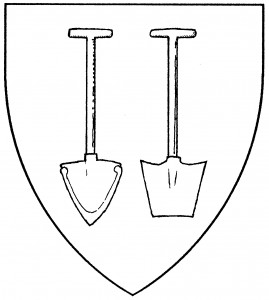A spoon is an eating utensil, with a small shallow bowl attached to a handle. It is found in the canting arms of Sponeley, 15th C. [Neubecker 136], as well as the arms of von Korkwitz, 1605 [Siebmacher 72]. The spoon is affronty by default, with the bowl to chief.
A similar charge is the “ladle”, with a deeper bowl and a long hooked handle, used for serving soup or other liquids. It too is a period charge, found in the canting arms (from dial. Italian cazùu, “ladle”) of de Cazullis de Crema, mid-15th C. [Triv 98], and of de Cazaviis, c.1550 [BSB Cod.Icon 270:283]. The ladle is palewise, handle to chief, by Society default.
Unique to the Society is the “spurtle”, of which we have a single registration. The blazon is misleading: a spurtle is a Scots cooking tool for turning oatcakes, dated in the OED to the 16th Century, which is not the charge used in the Society. That charge is drawn as a notched spoon, resembling the utensil modernly called a “spork”. Given the discrepancy of the terminology, and the modern nature of the artifact, it is unlikely to be currently registerable without documentation.
The Shire of Canale bears: Sable, a ladle reversed and on a gore dexter Or a laurel wreath sable.
The Madrone Culinary Guild bears: Gules, in fess a spurtle, a dagger, and a spoon palewise Or.
Máirgrég ingen mic Gillebrath bears: Lozengy sable and Or, a spoon gules.
